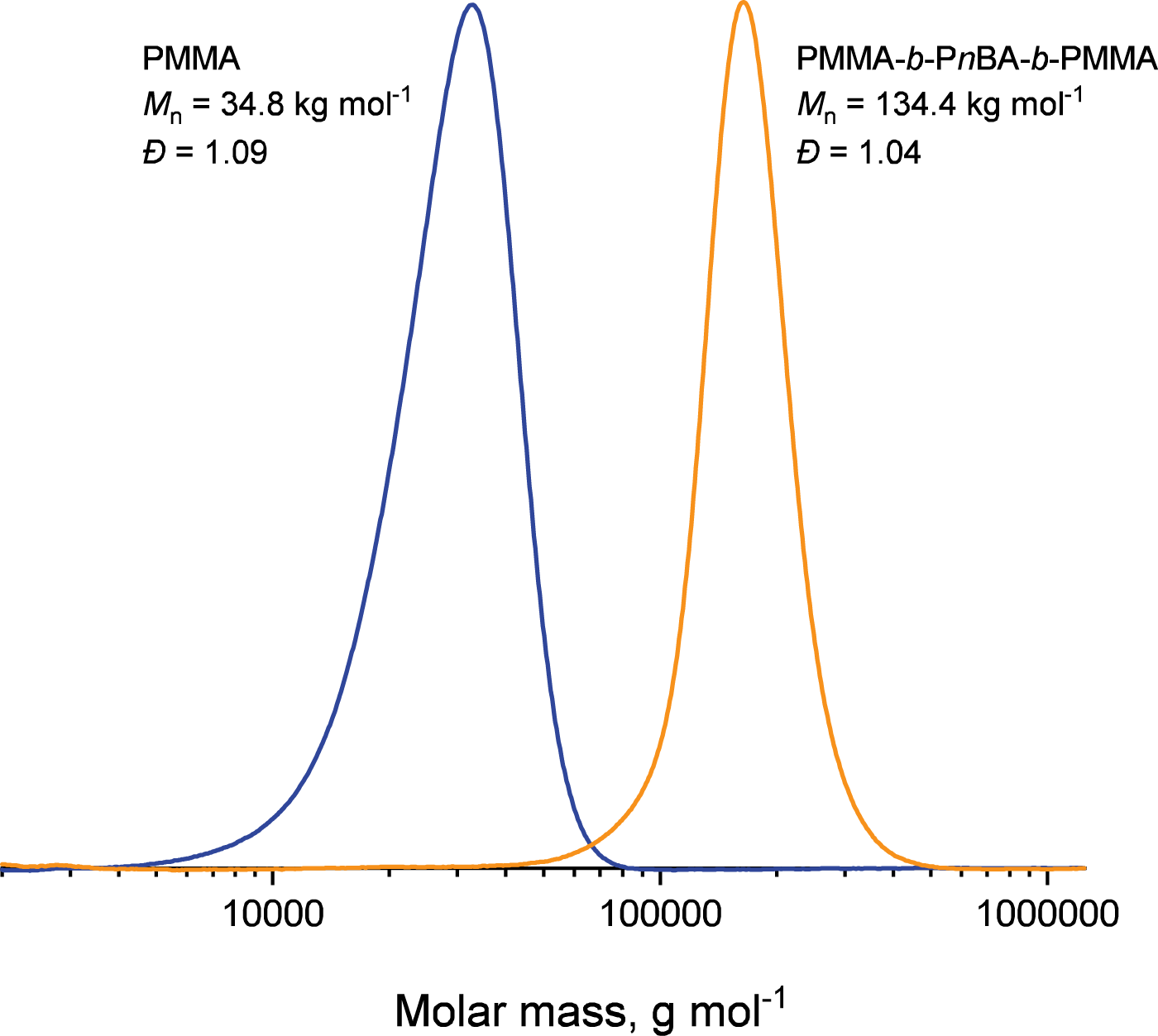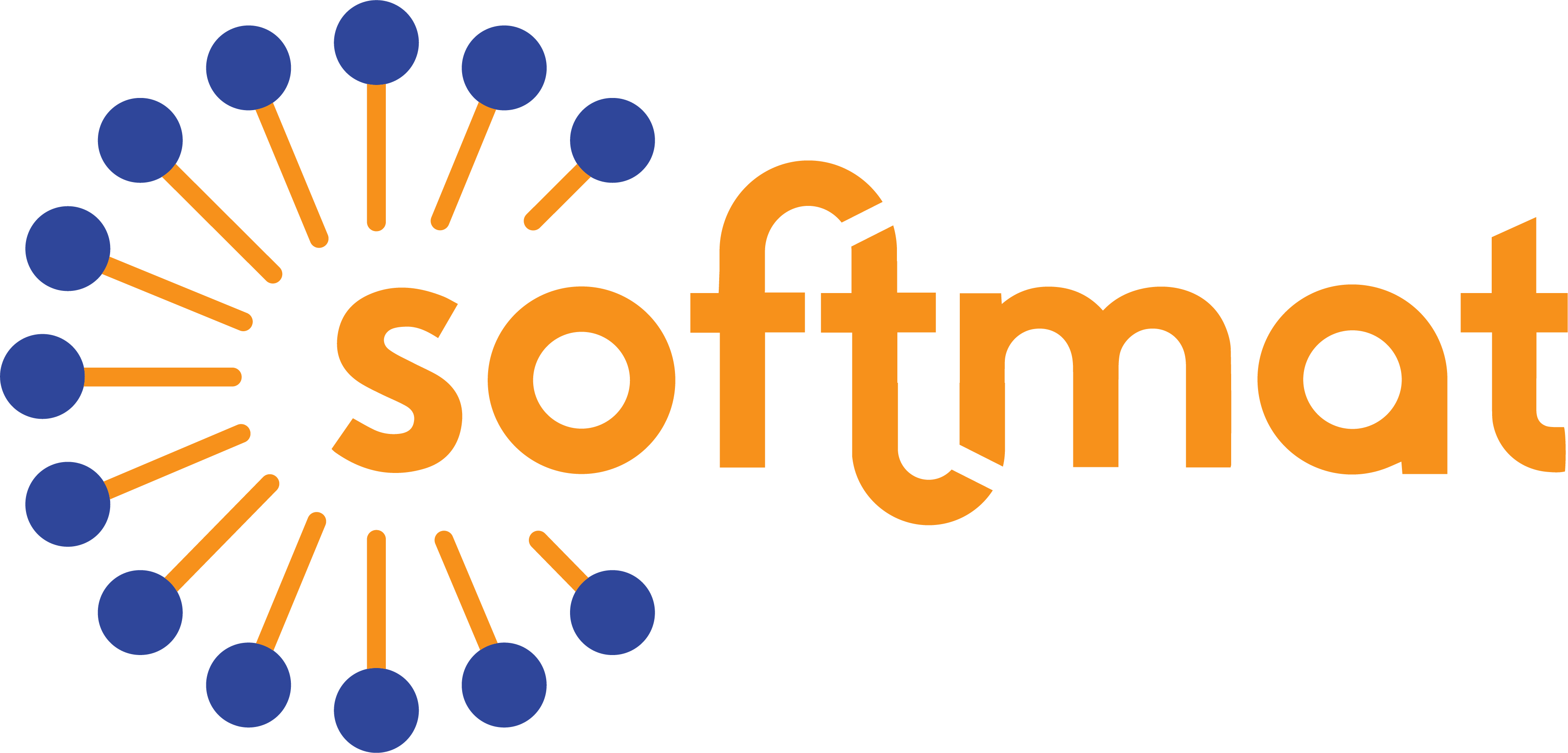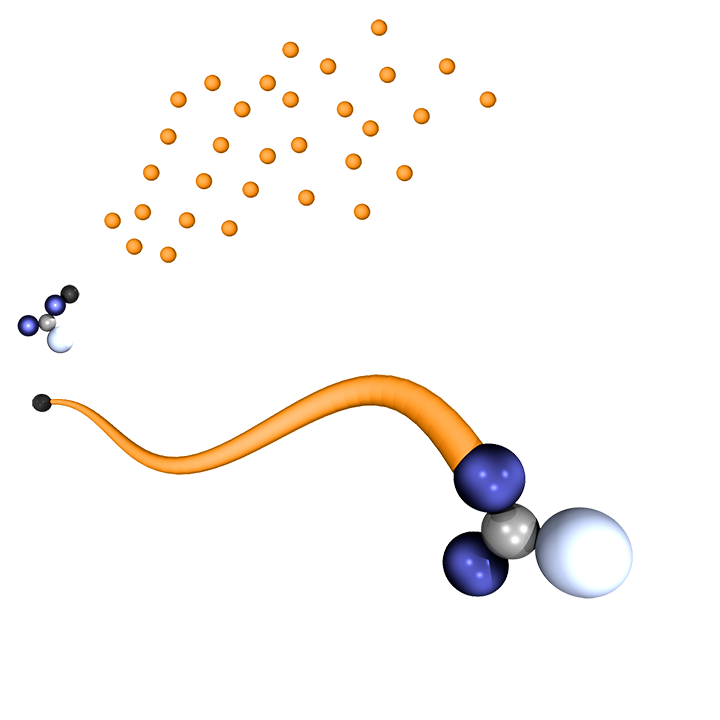
Pushing back the boundaries of RAFT polymerisation
The P3R group capitalises on a 25-year track record in RAFT polymerisation, which is a fantastic technology with unique versatility for tailor-making functional copolymers of complex architectures and microstructures.
A non-exhaustive list of our contributions in this field covers:
the development of specific RAFT agents of general structure R-S-(C=S)-Z, and the study of their structure-reactivity relationship
We designed several classes of original so-called hetero-RAFT agents with Sn, Se, P in α to C=S bond. These RAFT agents were found useful probes for heteronuclear NMR monitoring of polymerisation reactions.
the N-vinyl monomers
We were the first to successfully control RAFT polymerisation of N-vinylpyrrolidone (VP) in water, and to efficiently control the RAFT polymerisation of N-vinylcaprolactam (PVCL) over a wide range of molar masses leading to well-defined thermoresponsive polymers. Recently, we tackled the RAFT polymerisation of non-cyclic N-vinylamides and succeeded in controlling the polymerisation of N-methyl-N-vinylacetamide (NMVA) and N-vinylformamide (NVF), paving the way to new block combinations that were previously unattainable.
the access to controlled ultra-high molar mass polyacrylamides (Mn ~ 10⁶ g/mol) ) by aqueous RAFT gel polymerisation
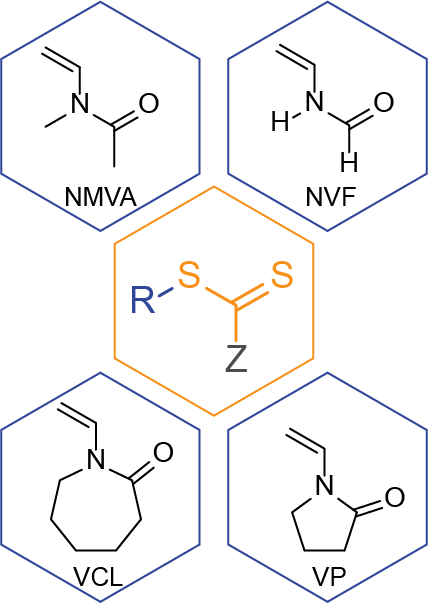
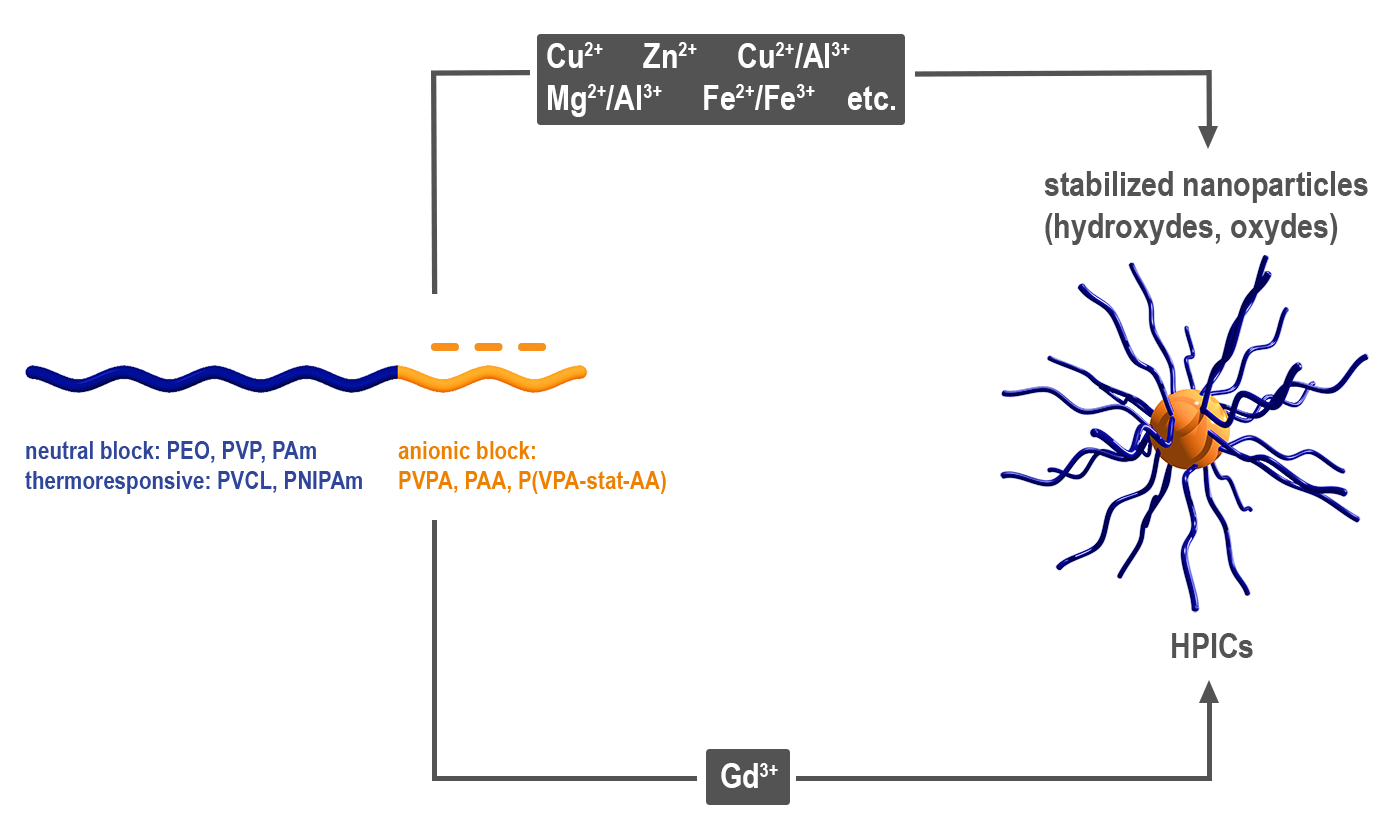
the synthesis of phosphonic acid-functional block copolymers, in particular for the preparation of well-defined inorganic-polymer nano-assemblies in aqueous media
all-methacrylic ABA thermoplastic elastomers with tunable characteristics from unprecedented RAFT control

